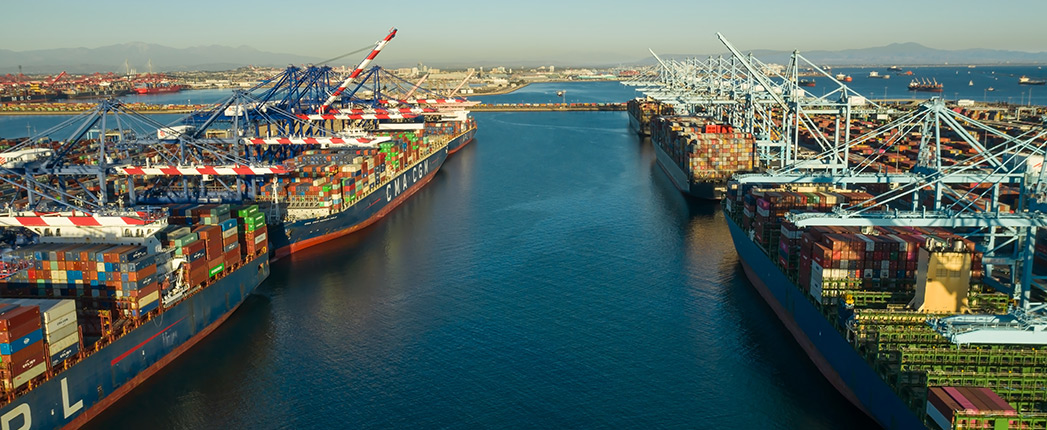
Supply chain challenges caused by the COVID-19 pandemic have underlined the importance of the partnerships between distributors, lubricant manufacturers and raw material suppliers, speakers told the Society of Tribologists and Lubrication Engineers’ Virtual Annual Meeting and Exhibition.
During a panel discussion titled “Supply Chain: Challenges in Sourcing Raw Materials and Supplying Lubricants in a Timely Fashion,” speakers said the COVID-19 pandemic caused global supply chains to fracture, leading to longer lead times for raw materials due to shortages and accelerated problems.
A shortage of truck drivers has also resulted in difficulty delivering finished lubricants in a timely fashion. Questions addressed included how distributors could help their customers find alternative raw materials, provide insights about the supply crisis duration and help customers prepare for future supply disruptions.
Both panelists highlighted the importance of partnerships in coping with supply chain challenges.
“If we look at the last 15 months to February [2020], the word ‘partnership’ is often overused, but that is a critical tool,” Steve Brownfield, vice president of supply chain and operations for Azelis Americas, said. “Where we’ve had strong relationships with customers and suppliers, we found ourselves better able to navigate this difficult period of time.”
“The more you can tell distribution and your supply chain internally as to what raw materials you’re going to need, the better distributors can be prepared for you,” Christy Henley, vice president of sales for North America East for Sea-Land Chemical Co.
Both domestic and international supply chains have been interrupted, said Brownfield. “Certainly internationally there is the port congestion situation, and domestically a shortage of drivers and shortage of equipment,” he said. “Everyone is aware and have seen your freight rates go up. Often what that means is you’re getting less than full truck loads, which impacts your costs per pound.”
The current logistics situation might require paying a “premium upon a premium” to ensure timely delivery, he noted. “Those carriers that you may have contracts with, they’re likely going to the highest bidder,” Brownfield said. “That’s something you need to factor in. If you can get a carrier with good, consistent delivery results – especially today – the premium is probably worth it,” versus the costs of potentially delaying or having to cancel production.
Brownfield said it’s difficult to estimate the duration of the supply chain crisis because of the number of factors involved. “Everyone believes as the year progresses towards the end of the year, things will start to get a little looser and a little freer,” he said. “Certainly the variable of hurricane season – where most of production is made, the Gulf area – is something that’s an unknown. We’re hopeful, especially on the freight side, that as more people and more equipment becomes available, that’s going to ease some.”
Henley noted how distributors’ typically have numerous different suppliers across the globe and across the country, as well as many different customers. “Whereas some suppliers may have a unique portfolio of chemistries, a lot of times distributors have a wide array, so that’s how we can help our customers when we’re looking for alternate materials,” Henley said. “A lot of times distributors with our outreach to different suppliers might be able to find sources or alternate sources for the customers that maybe the supplier won’t have themselves or might not want to share because of competitive situations.”
She explained how if a lubricant manufacturer is unable to find the exact chemistry due to supply chain disruptions, distributors can help by partnering with their R&D to help find a functional replacement for the chemistry. “It may not be that a distributor can offer you the same chemistry, because it’s single-sourced or because they can’t get it because of the freeze in Texas,” she noted. “But we might be able to find you an alternate, functional replacement for your formula that gets you through to the point where you’re going to be able to get a supply again.”
According to Henley, the deep freeze that impacted Texas and the southern United States in February has had deep-reaching impacts that continue even now. Many suppliers are saying it’s going to be the end of summer before they have their inventories rebuilt, she noted, and they have product going out at 100% whenever an order comes in. “Some others say it may take until the fourth quarter, and I think it’s all dependent on what suppliers are back-integrated into the different raw materials,” she said.
She said the supply chain crisis illustrated how interconnected companies are to raw material sources in other regions. “A lot of us were surprised to see how much is made down in the south and southeast that influences even manufacturers up in the Midwest, West Coast and Northeast,” she said, adding that the hope going forward is many people involved in strategic sourcing will prepare a little better in terms of having inventory on the floor, to ensure they have key raw materials they might not be able to get elsewhere.
Shipping logjams at ports remain an issue. “We continue to see ongoing delays from Asia imports, as well as from Europe,” she said. “There are a number of ships just out on the Port of Los Angeles waiting to get to the dock. They are so congested because demand is so high.” She said that while high demand is great, ports are just too congested for container ships to get in as quickly as they used to. “I don’t think anyone has a timeline on when we’re going to see back to normal,” Henley said. She added that “normal” refers to around a six to eight week time frame for container ships from Europe or Asia to arrive in the United States.